Montbretia crocosmia x crocosmiiflora identification guide
A popular choice in gardens because of its elegant reddish-orange flowers, this is an invasive species that can spread rapidly if not controlled. Montbretia propagates through a network of underground corms and tends to spread via these rather than through seed dispersal
Quick facts
- Montbretia is a hybrid plant and part of the iris family, originally native to South Africa.
- Although it does produce seeds, most of its reproduction takes place vegetatively.
- Even small fragments of Montbretia corms can become established, particularly in sunny spots.
- It can quickly overrun a location and outcompete native flora.
Quick Links




What is Montbretia?
Montbretia crocosmia x crocosmiiflora was first bred in the 1880s and came to the UK via France, although its origin is distinctly South African. It has been a popular plant in gardens for most of that time and is more common in western parts of England, Wales and Scotland.
It’s different from many other plants in that it has corms which are fleshy underground parts of the stem. These corms act as a storage organ for the plant, but they can also initiate growth in much the same way as a bulb. The corms of the Montbretia plant can grow quite deep which makes fully eradicating it problematic.
While it is an attractive plant, it is now listed in Schedule 9 of the Wildlife and Countryside Act 1981 as invasive although it is not illegal to have Montbretia on your property, Whether you do or not, you must pay special attention to how you dispose of cuttings and corms if you want to get rid of them.
The soil and plant matter are considered controlled waste so have to be handled by a licensed garden waste company. While Crocosmia x crocosmiiflora is on the invasive plant list, other Montbretia varieties are still available online and in garden centres around the UK. It tends to prefer moist, well drained conditions but can lay dormant underground during dry periods.
What does Montbretia look like?
The plant dies down in the winter and the corms become dormant but during the spring you will begin to see the familiar sword-shaped leaves appearing once more. The Crocosmia x crocosmiiflora variety is distinctive for its exotic and decorative gladioli-type flowers that provide a burst of exotic colour.


Montbretia flowers
The plants tend to flower during the late summer and into the autumn. Even though they are an invasive species, people often like to have Montbretia in their gardens because the flowers can bloom for several months before the colder weather starts to settle in.
The flowers are two-toned bright orange/red and tubular with six petals that are fused and are around 4 cm in length. Unlike other plants, these don’t then turn into seeds in most cases. When they do they form from small green, brown fruits that can be eaten by birds and dispersed.
Montbretia leaves
Montbretia leaves are long and narrow and usually emerge from the base of the plant. There can be between 6 and 12 leaves for each corm, and they grow to around 60 centimetres. In between the leaves, you will see upright, rounded green stems from which the flowers will eventually develop.


Montbretia varieties
There are over 400 different varieties of Crocosmia available, and most have been purposely bred for the garden. These include:
- Solfataire Crocosmia x crocosmiiflora ‘Solfatare’: The ‘Solfataire’ variety is characterised by vibrant yellow flowers that bloom over the summer. The stems can grow to more than half a metre and the flowers usually last throughout the summer and into autumn.
- Crocosmia ‘pottsii’: This is one of the older varieties of Montbretia and it is characterised by delicate red funnel-shaped flowers with orange throats. As with other Montbretia, it can become a nuisance if not planted in the right place in your garden.
- Crocosmia ‘lucifer’: While other varieties tend to verge towards the orange or yellow spectrum, the flowers here are a bright and intense red and are often found in herbaceous borders.
As a colourful garden variety, there’s a lot to be said for Montbretia – it’s not only attractive but takes little in the way of maintenance. When allowed to spread, however, it can quickly overwhelm other species and local flora and fauna which is why it’s such a problem in the wild.
Why is Montbretia a problematic invasive species?
While it is still popular in gardens, in more recent years Montbretia has spread to the countryside where it is causing problems with roadsides, waste ground and hedge banks, especially when garden trimmings are dumped. Under the Wildlife and Countryside Act, it is illegal to cause the plant to grow in the wild.
Montbretia loves sunny, well drained soils, but does not need a rich soil to thrive, so once released into the countryside it can quickly grow out of control. Once clusters get a hold, they can easily outcompete other flora which is likely to have a significant impact on the local ecosystems.

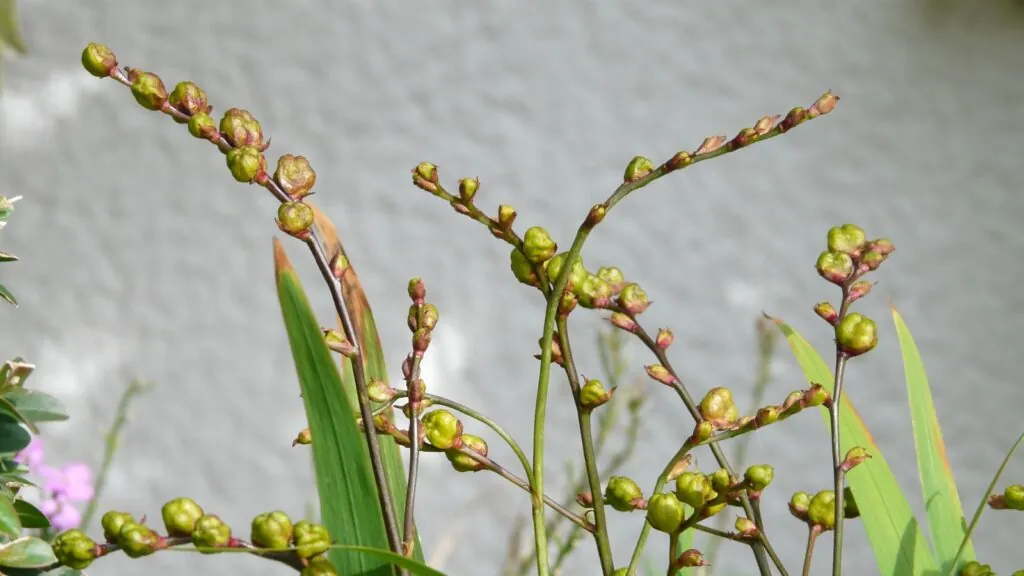
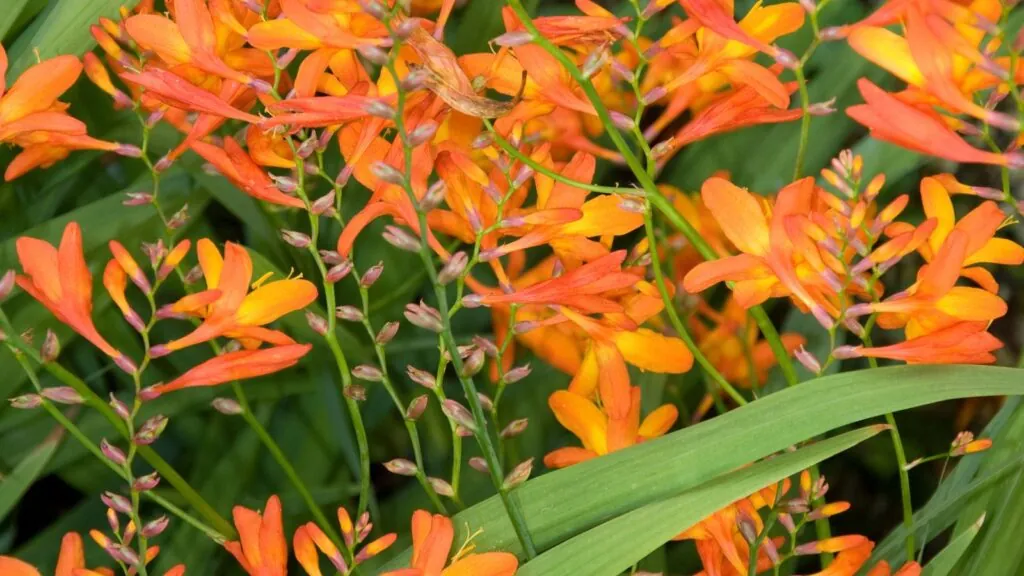
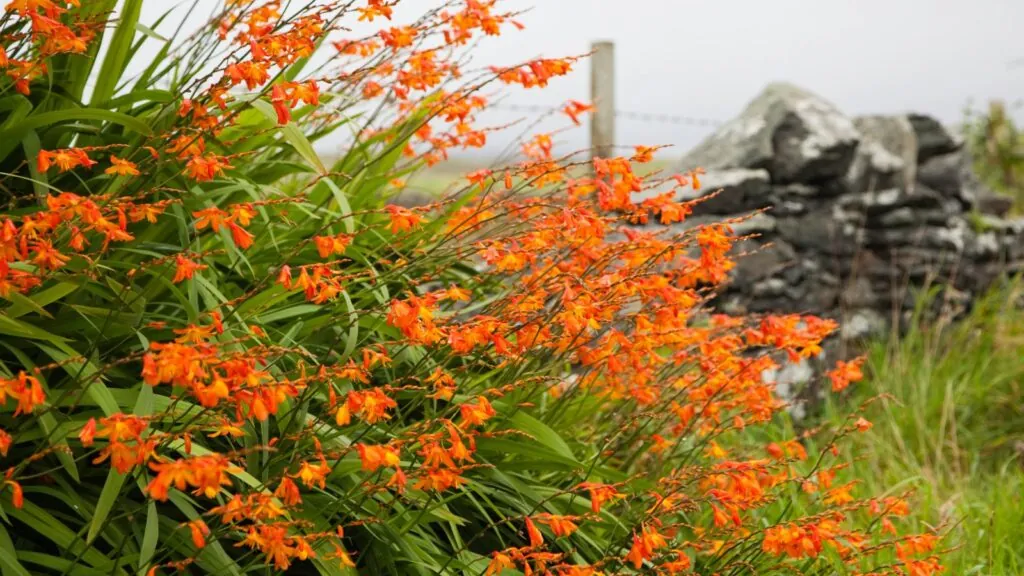
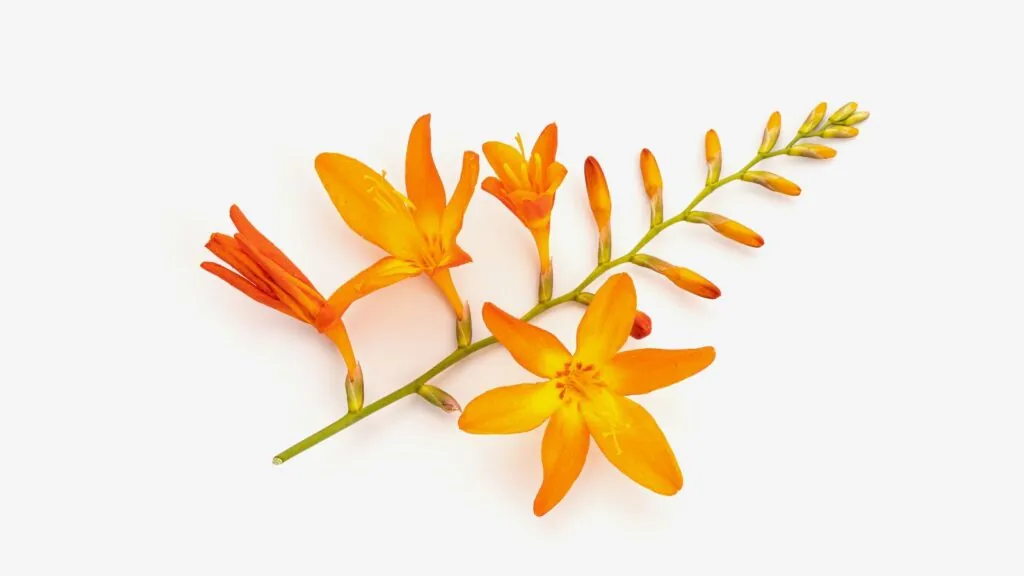
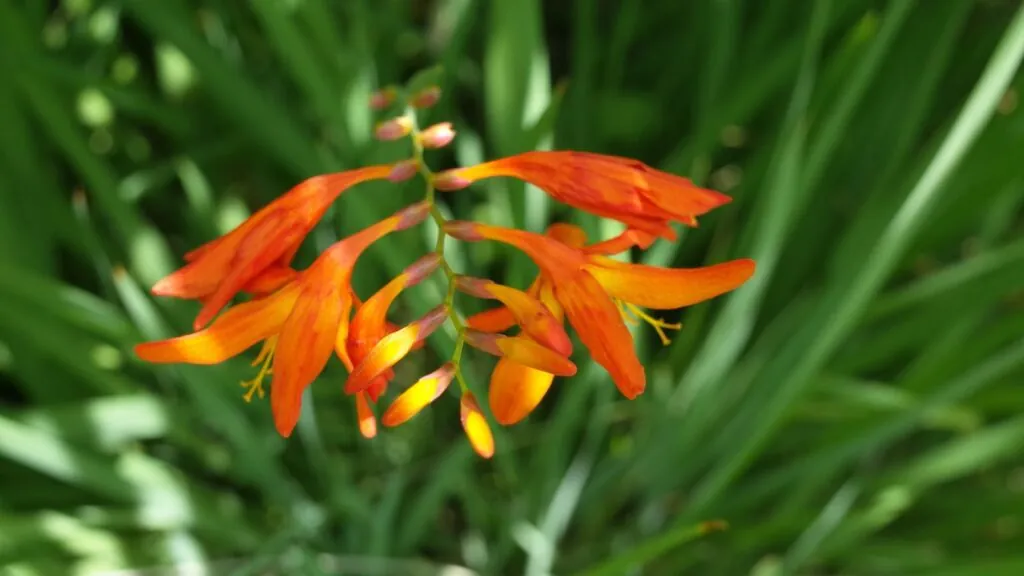
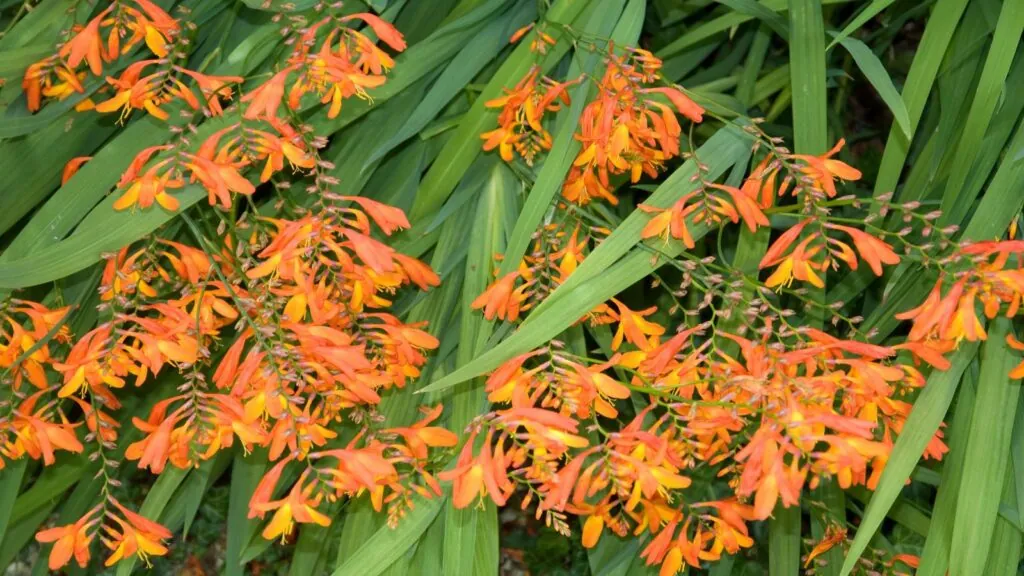
Is Montbretia illegal?
While it’s not against the law to have Montbretia growing in the garden, it is a good idea to ensure that the plant does not spread to other gardens in the area. Some councils will have their own rules and regulations concerning invasive species like Montbretia and it may be prudent to check if you need to remove the plant.
It’s important to check the plant is not spreading beyond the boundaries of your garden and you may want to remove some of the corms when it dies down in the winter to prevent them from getting out of control. Again, disposing of the plant and any cuttings needs to be done responsibly and certainly, any roots or corms should go to a licenced landfill site.
Start fixing your invasive plant problem today by requesting a survey
Request a survey
Rest assured, where invasive species are identified at an early stage and tackled correctly, problems can usually be avoided. Our specialist consultants complete thorough surveys to identify the extent of the problem. Our plans aren’t one-size-fits-all; they’re customised to tackle the invasive species at your property effectively, taking account of all of your requirements.
What our clients say
Reviews
Ali Hamaad
“I used Environet following a recommendation to help with invasive Japanese Knotweed in my garden. Very professional, responsive and managed to co-ordinate with other contractors working on my property to remove the knotweed.”
Bernadette Spencer
“Richard was able to book us an assessment visit very quickly regarding the encroachment of evasive running bamboo in our garden .. Will completed the assessment visit,we found him to be very professional, but also friendly and easy to talk to. “
Phil Smith
“This is a very professional operation; always just on the end of the phone. The whole team seemed to know exactly what was going on with the job. (and my neighbours were very happy too.)”
Kim
“I’d just like to take the time to commend the team I have spoken to already, in particular Rachel and Suzie – they have been so friendly, reassuring and informative which has really eased the stress around this situation. Thank you all for your time. .”
L Schjolden
“I would like to commend your man Ed, who was in charge of the works at our property. He was a pleasure to deal with — punctual, polite, professional, responsible. He always kept me up to date with the progress of the works and made sure there was as little disruption to our lives as possible.”
GET IN TOUCH
Contact us
Our team of experts is available between 9am and 5:30pm, Monday to Friday to answer your enquiries and advise you on the next steps
Want a survey?
If you already know you have an invasive plant problem, you can request a survey online in less than two minutes by providing a few brief details. A member of the team will swiftly come back to you with further information and our availability.
Need quick plant identification?
Simply upload a few images of your problem plant to our identification form and one of our invasive plant experts will take a look and let you know, free of charge what you are dealing with. We’ll also be there to help with next steps where necessary.



